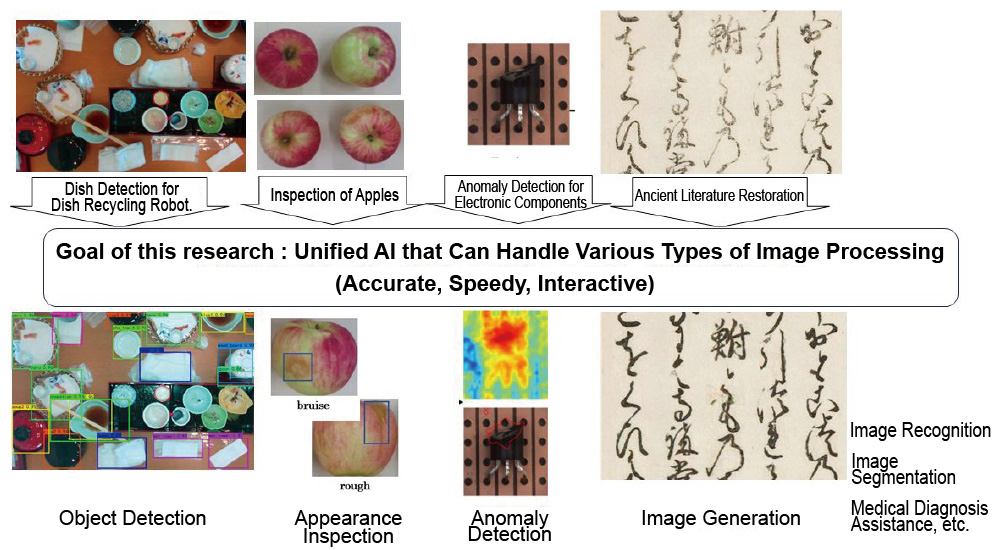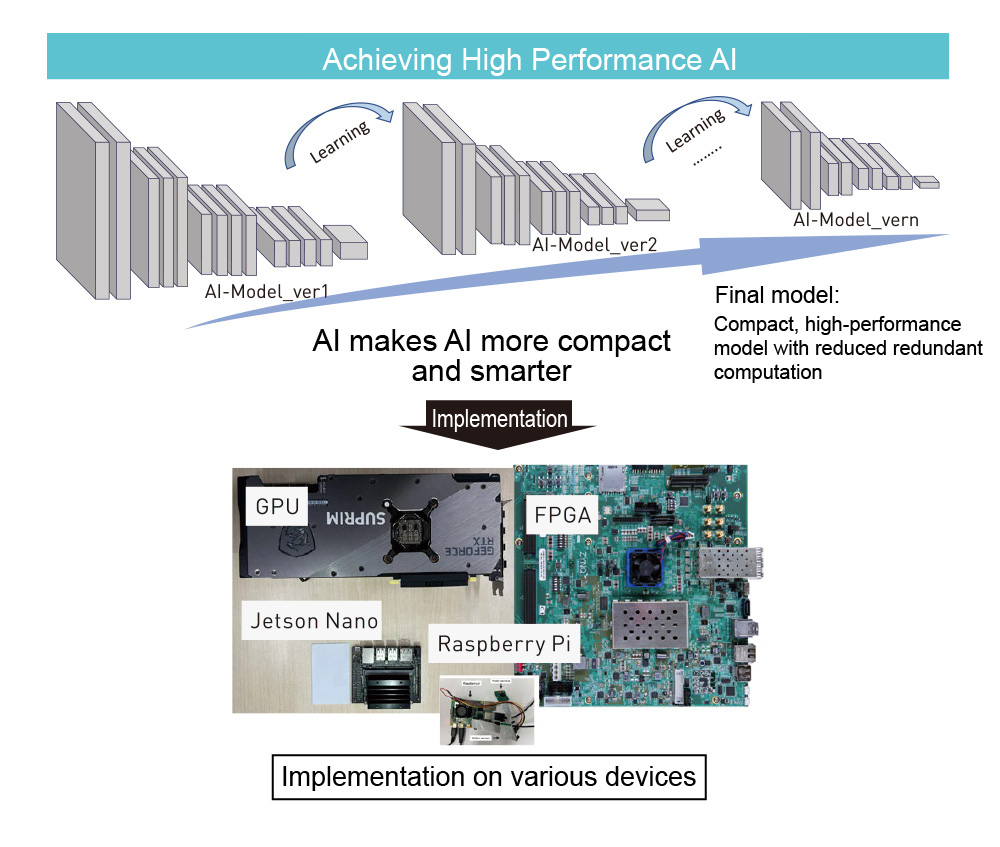AI Model Automatic Generation and Operation
AI Model Automatic Generation and Operation
This research aims to automatically generate AI models for industrial applications. The AI model provides essential functions such as image recognition, object detection, anomaly detection for various industrial use cases. Furthermore, the research also includes optimizing those AI models to fit the size of hardware devices. This work is expected to enable small and medium-sized enterprises to adopt and utilize AI without a large number of AI experts, thereby contribute to improving their competitiveness.
- Affiliation:
- Ritsumeikan University
Intelligent High-Performance Computing Laboratory
- Representative:
- Meng Lin

Professor,
Department of Electronics and Computing Engineering,
College of Science and Engineering
Meng Lin PhD
Professor, College of Science and Engineering, Ritsumeikan University; 2015 Visiting Scholar at School of Information Science and Engineering, University of Minnesota; has published over 300 papers; research areas include computer architecture and artificial intelligence; member of IEICE, IEE, IPSJ, ACM; IEEE Senior Member.
SOCIALSocial Implementation
Conducting Verification Experiments for Adaptation to Various Industrial Fields
Verification experiments have been conducted in the following areas: (1) An AI model was integrated with robots to automatically dishes recycle dishes after the meals. (2) An AI model was applied on the inspection of agricultural products, such as apples. (3) An AI model was designed for anomaly detection in industrial parts. Furthermore, we also restored ancient documents using AI. The uniqueness of (1) and (2) lies in the fact that the models were automatically generated in accordance with hardware resources, while the restoration of documents in (3) was an unprecedented challenge globally.
ORIGINALITYUniqueness, Passion for Development
Innovation to Automatically Generate AI Models with few Engineers Required
This technology automatically generates AI models by selecting the necessary AI components, according to the hardware resources. Since few engineers are required, users can easily generate AI models. Furthermore, the automatic generation process also includes accuracy improvement and optimization for the hardware resources. The system covers a wide range of image processing tasks, including image classification, object detection, and anomaly detection, and can be adapted to a variety of industrial needs.
VISIONDream, Outlook, Business Image
Integrated and Interactive AI that is More User-Friendly
Currently, the AI model is focused on object extraction (e.g., plates, apples with scratches, etc.), however, we intend to integrate various processes such as image recognition, object detection, anomaly detection, and image generation. Additionally, we aim to develop an AI model that can interact with the users. This model will provide results to the user via voice or words, while simultaneously receiving the user instructions via voice to modify the model as needed. For example, anomaly detection can be shared, and models can be promptly improved based on user feedback.

image photo



